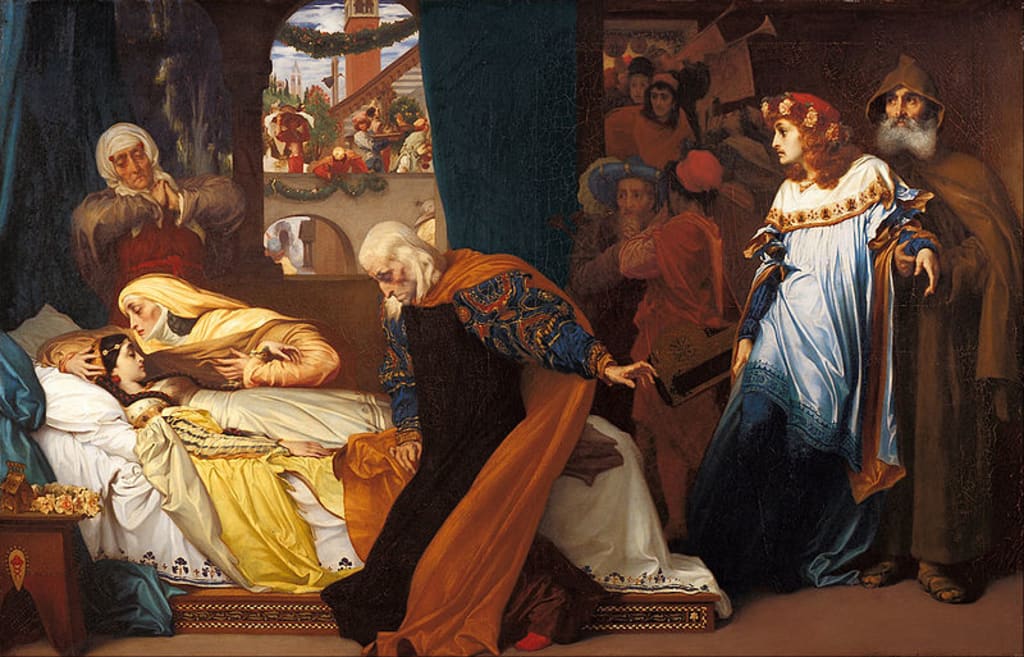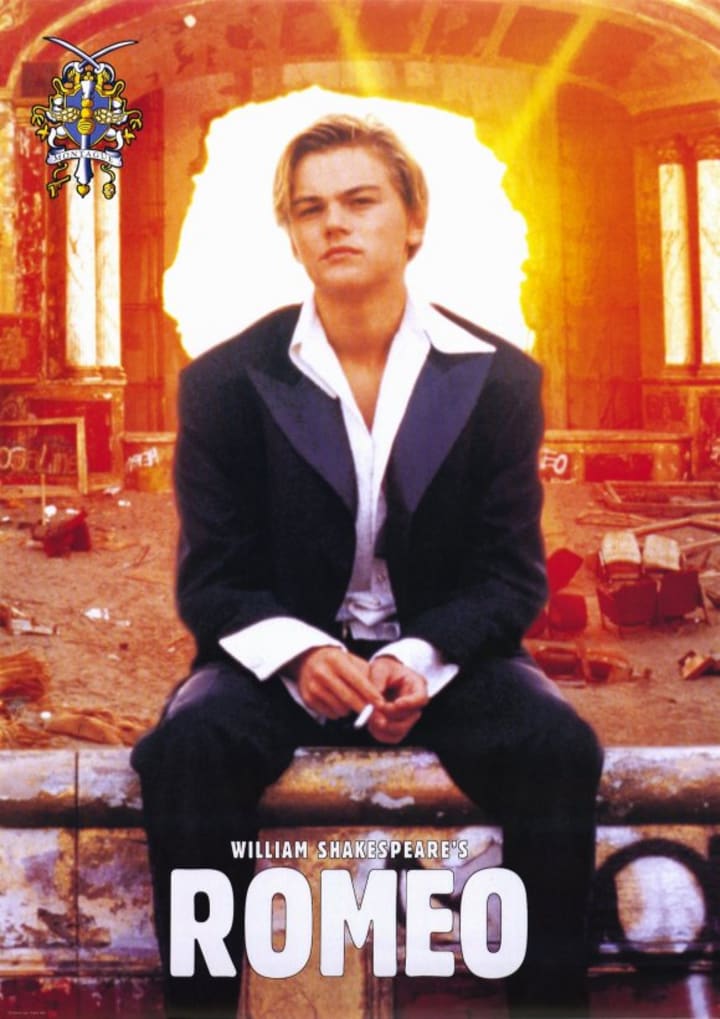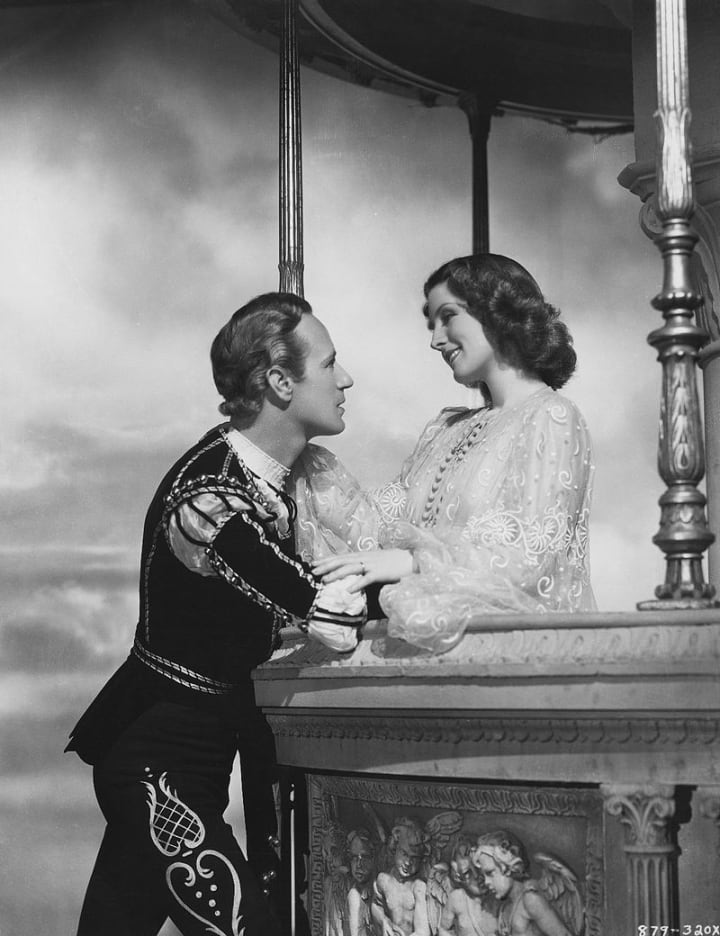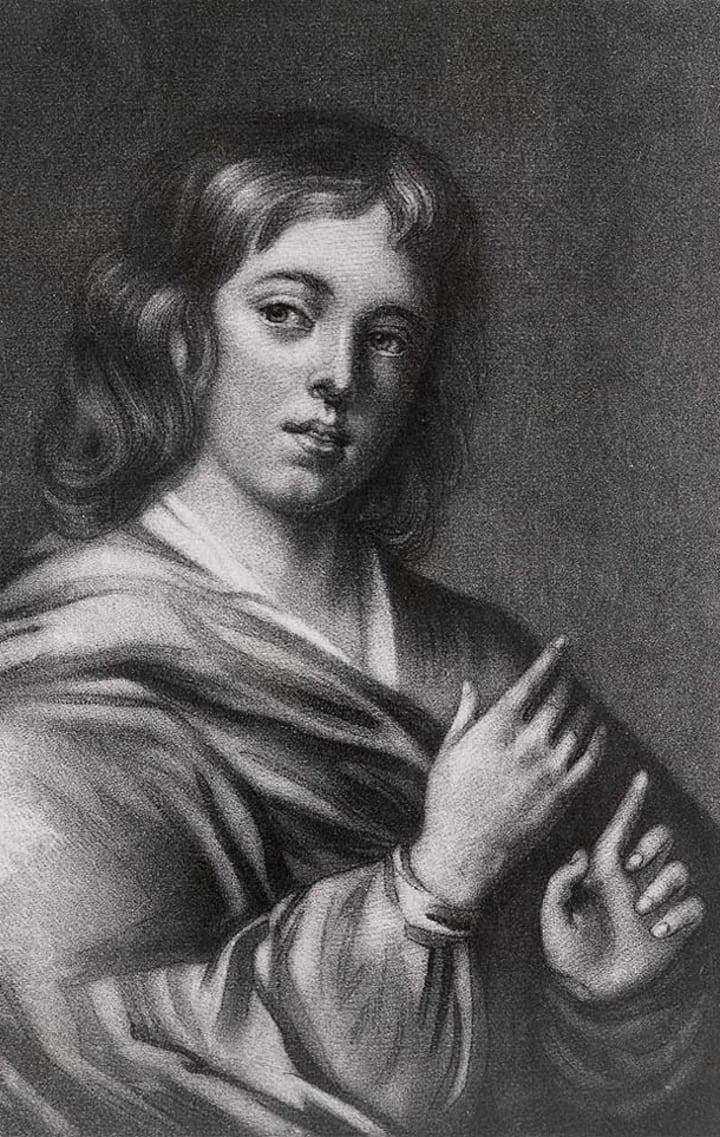
When William Shakespeare wrote Romeo and Juliet, relatively early in his illustrious career, he did what he nearly always did: reworked a story that was already well-known, and made his version the one that history would remember. The tragic tale of the Montague and Capulet family feud, which seems to have had some basis in fact, was first documented by Italian and French poets from the years 1530 to 1559. Shakespeare worked primarily from Arthur Brooke’s 1562 version, which was the first one written in English. Romeo and Juliet proved popular with audiences and was published twice during Shakespeare’s lifetime, in 1587 and 1599. It then appeared in the 1623 first collected edition.
If any Shakespeare play requires no introduction though, it’s Romeo and Juliet. Hamlet may be considered Shakespeare’s greatest work, where “greatest” means the most dramatic or the most insightful as to the human condition, but Romeo and Juliet is surely his best-known. Nearly everyone in the world today is familiar with at least the characters and the basic plot of Romeo and Juliet. The names of the hero and heroine have become words in everyday English use. For over four hundred years, no literary work has influenced and informed our conception of love as much as this one play.
As this is so, one of the most daunting tasks that faces us when we study Romeo and Juliet is to try and return it to some sort of context, for the truth is that what has maintained this play’s status as Shakespeare’s most beloved over those four hundred years has been an almost continuous process of adaptation and refiguring. In the Twentieth Century, our perceptions of Romeo and Juliet were shaped principally by three hugely successful films: George Cukor’s in 1936, Franco Zeffirelli’s in 1968, and Baz Luhrmann’s modern-dress version in 1996. A musical based on the play, West Side Story (1961) was also significant, whilst our present century has yet to yield a significant film of Romeo and Juliet.

The popular media has played a large part in keeping Romeo and Juliet alive these latter days. However, all three of the major Twentieth-Century movies privileged a notion of the play as a beautiful and instructive love-story, at the expense of many other elements Shakespeare included in his original text. The most cited example of this tendency is the omission of the swordfight late in the play in which Romeo kills Juliet’s intended husband, Count Paris. This scene, which presents a dark side to Romeo and has him slaughter an innocent man who genuinely loves Juliet, is no friend to the modern director.
Moreover, Jonathan Bate and Eric Rasmussen in a recent introduction to the play argue that its greatest strength is in its deployment of opposites. They describe it as “a tragedy that keeps surprising us with flashes of comedy.” This is apparent from the very first scene. When the Capulet servants Sampson and Gregory appear, they are bandying words and cracking jokes as if this was going to be a comic play. However, they are also carrying swords and shields, in anticipation of the violence that will soon replace the laughter.
Romeo and Juliet in fact contains some of the funniest and rudest humour in Shakespeare, as well as some of the most beautiful poetry. When these humorous components are removed from the play we inevitably lose something of Shakespeare’s original intention, but removed they usually are. There are many comic interludes with Lord Capulet and his servants that typically disappear from stage and screen productions, and in addition, no filmed version has ever included in its uncut state the sequence with Peter and three musicians that immediately follows the discovery of Juliet’s faked death on the morning of her wedding.
Of course, the audience knows she isn’t really dead. Even so, a comedy skit while an apparent corpse still lies onstage is the last thing we expect in a tragedy today.

The other much commented-on revision to Romeo and Juliet has to do with the heroine’s age. Juliet is only thirteen, and though we’re not told Romeo’s age, we can gather from his dialogue he’s at the very least a few years older than her. Directors, artists and filmmakers have typically found it more comfortable to depict Romeo and Juliet as a couple significantly older than thirteen, and crucially, of the same age. George Cukor however may have been taking this a little far, when he cast thirty-four year-old Norma Shearer as Juliet, and forty-three year-old Leslie Howard as Romeo in his 1936 film!
Certainly, it would be a daring production of today that cast a thirteen-year-old actress as Juliet and fully explored every experience she undergoes in the play. But of course, Shakespeare’s original audiences didn’t see a performance like this either. Acting was still an exclusively male profession in the days of Shakespeare, and female parts were played by boys whose voices hadn’t changed yet. The first Juliet was a boy, like all of Shakespeare’s great heroines. That oppressive patriarchal world Juliet inhabits, and which we find so uncomfortable to hear about now, was in fact at one remove for contemporary audiences too.

Romeo and Juliet is not grouped among Shakespeare’s so-called Four Great Tragedies. This is partly because it was written somewhat earlier, but the main argument for its exclusion is that the tragic climax to Romeo and Juliet is brought about by fate, or rather a series of unlucky chance occurrences. In Hamlet, Macbeth, King Lear and Othello, final calamity comes because of a psychological flaw in the principal character which Shakespeare has painstakingly developed throughout the play. The Four Great Tragedies, which were the first works of drama to function in this manner, are now seen as more mature accomplishments than Romeo and Juliet.
The Chorus to that play describes Romeo and Juliet themselves as “star-crossed lovers.” Romeo, moments before he meets Juliet, tells us his “mind misgives some consequence yet hanging in the stars.” These and other lines make it hard to ignore the part played in this tragedy by fate, perhaps none more so than the Friar’s words to Juliet after it all goes wrong: “A greater power than we can contradict hath thwarted our intents.”
Fate can be cruel, but that fate is also what finally ends the feud between the two families. Juliet and her Romeo did bring about an age of peace, as the Friar had hoped, albeit in a far sadder way. The beauty of Romeo and Juliet’s final sacrifice is perhaps the reason this greatest love-story is still loved by all.
About the Creator
Enjoyed the story? Support the Creator.
Subscribe for free to receive all their stories in your feed. You could also pledge your support or give them a one-off tip, letting them know you appreciate their work.






Comments (5)
Informative I always thought Romeo & Juliet was the original work of Shakespeare but must admit it takes a good writer to make the already written stories even better. I myself don't prefer any sad endings but Shakespeare based his work on reality, and in reality happy endings are rare.
I never knew that Romeo and Juliet wasn't an original from Shakespeare but it was reworked! Whoaaa, I always learn so much from your articles!
Beautiful review! You were right to remember that many amusing scenes are often evaded, there are theories that Shakespeare wanted to make fun of romanticism, also for this reason the tragic end is due to chance and misunderstanding. But every era reads the stories with its own yardstick and this has become a symbol of unconditional love.
The 1996 movie makes me cringe, honestly. Plays rarely make good movies. That's probably because the creative team has to make choices and "sacrifice" a few things. I have always seen "Romeo and Juliet" as Shakespeare's attempt at mocking patriarchy. Just like "A Midsummer Night's Dream" (my favorite play). Of course, I could be mistaken. As always, a phenomenal read! Thank you!
So informative, I enjoy your stories about Shakespeare writing. I cannot wait for Midsummer Dreams , if you are going to write his concept on this and how he was inspire to write it 💓Midsummer Dream is my favorite work of Shakespeare it’s not as the two you mention .